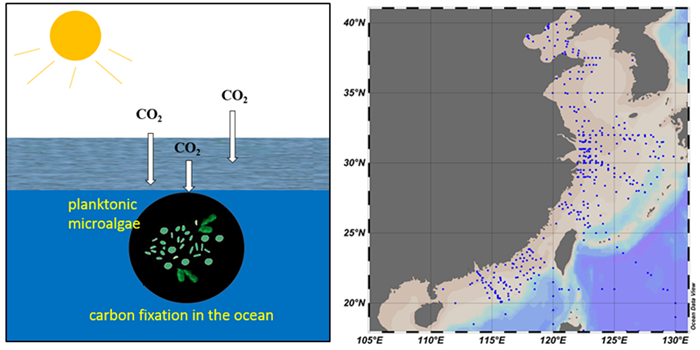Increasing emissions of CO2and other greenhouse gases are now facilitating global warming, which seriously threatens human life and social sustainable development. Curbing dangerous climate change requires deep cuts in emissions, as well as enhancing carbon sequestration. The ocean plays important roles in climate change mitigation due to its high capability in absorbing CO2from the atmosphere. For example, about 1/3 of the annual CO2emissions can be absorbed by the ocean. Indeed, the high capability of carbon sequestration in the ocean is mainly driven by microbes including bacteria, viruses, protozoan and picophytoplankton, etc.
Picophytoplankton refers to microscopic plants that live in water which usually isplanktonic and tiny algae. It is the most abundant photoautotrophic organism in the ocean. In some areas, over 80% of the total oceanic carbon fixation is contributed by picophytoplankton. The accurate estimation of carbon fixation of picophytoplankton in a wide survey on large spatiotemporal scales is still a challenge.
Recently, the marine carbon sequestration and ecological environment research group lead by Prof. ZHANG Yongyu atQingdao Institute of Bioenergy and Bioprocess Technology(QIBEBT)of Chinese Academy of Sciences developed a modified carbon-based ocean productivity model (CbPM) to successfully achieve this goal. They established a big picophytoplankton abundance database covering nearly all China Sea. Using the CbPM method, Dr. LIANG Yantao in the research group calculated that the annual carbon fixation by picophytoplankton in Bohai Sea is about 1.5 million tons of carbon. In other words, picophytoplankton in the Bohai Sea can absorb 66 million tons of CO2each year from the atmosphere.
Based on the research progresses, QIBEBT is now leading the development of one National Ocean Occupation Standard on “Blue Carbon Investigation, Monitoring and Measurement: Picophytoplankton”.
This study serves China Blue Carbon Initiative and is a contribution to the international IMBER project. The work is supported by the National Key Research and Development Program of China, the National Programme on Global Change and Air-Sea Interaction, Key R&D project in Shandong Province, NSFC project, and “135” project of CAS-QIBEBT R&D Innovation.

Marine carbon fixation and picophytoplankton abundance dataset in the China Sea (Image by LIANG Yantao and ZHANG Yongyu)